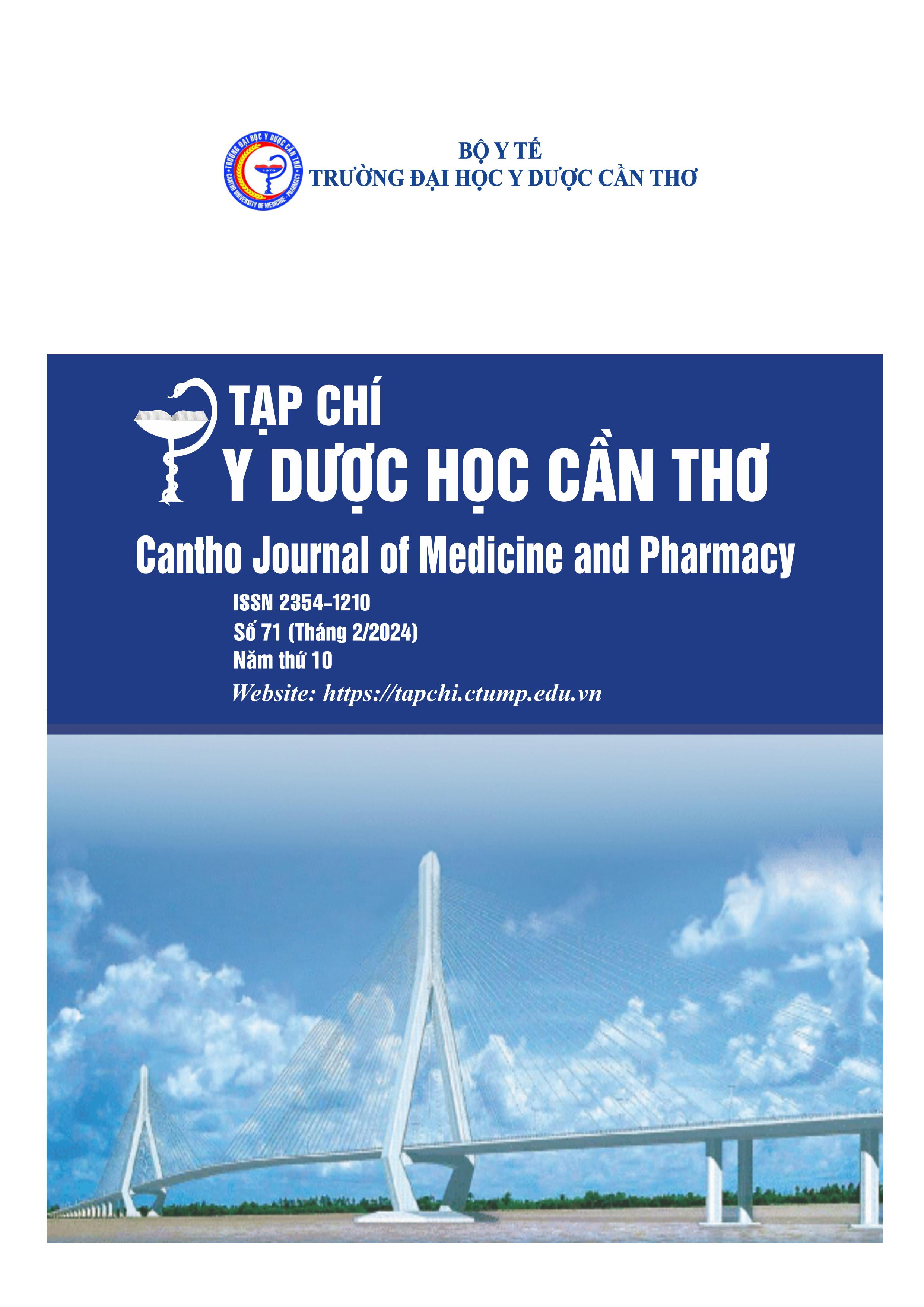CLINICAL CHARACTERISTICS AND DIAGNOSIS OF CUTANEOUS FUNGAL DISEASE ON SKIN BY MICROSCOPIC EXAMINATION AND CULTURE METHOD ON TESTING PATIENTS AT CAN THO UNIVERSITY MEDICINE AND PHARMACY HOSPITAL
Main Article Content
Abstract
Background: Cutaneous fungal disease is a common skin disease of superficial infections, although it is not fatal, it affects aesthetics and quality of life. Objectives: (1) To determine the prevalence of cutaneous fungal infections diagnosed by microscopic examination and culture method. (2) To describe the clinical characteristics and relationships of cutaneous fungal infections. Materials and methods: This cross-sectional descriptive study was conducted in 143 patients having instructions for testing at Can Tho University of Medicine and Pharmacy Hospital Results: The prevalence of cutaneous fungal infections diagnosed by microscopic examination was 53.8% and diagnosed by culture method was 55.9 %. Compatibility level between microscopic examination and culture method shows Kappa 95.8%. The study recorded that the highest proportion of causative fungi is Candida albicans 16.1%, followed by Candida tropicalis 13.3%, and finally Trichophyton mentagrophytes 0.7%. The common clinical symptom is itching 93.75%. Common locations of damage are the face, neck 31.25% and the body 31.25%. Skin lesions include 60% papules, 50% scaly skin and the boundary of damage between healthy skin and diseased skin 30%. An association was found between cutaneous fungal infections and factors such as sweaty skin, oily skin, collective living, sharing towels and corticosteroid use (p<0.05). Conclusions: The prevalence of cutaneous fungal infections diagnosed by microscopic examination was 53.8% and diagnosed by culture method was 55.9%. The main symptom is itching 93.75%, the most common locations are the face, neck and body accounting for 31.25% respectively. It was demonstrated that sweaty skin, oily skin, collective living, sharing towels and corticosteroid use was associated with cutaneous fungal infections (p<0.05).
Article Details
Keywords
Cutaneous fungal infections, microscopic examination, culture method
References
2. Võ Thị Thanh Hiền, Nguyễn Thị Huyền Sương, Vũ Văn Thái, Đinh Thị Thanh Mai, Trịnh Văn Khương, Đỗ Thị Huỳnh. Thực trạng bệnh nấm da của bệnh nhân đến khám tại bệnh viện Da liễu Thái Bình. Tạp chí Y học Việt Nam. 2022. Tập 515, Số đặc biệt, 304 – 311, https://tapchiyhocvietnam.vn/index.php/vmj/article/view/3707.
3. Cao Bích Ngọc, Phạm Thị Minh Phương. Đặc điểm lâm sàng của bệnh nấm thân tại Bệnh viện Da liễu Trung ương. Tạp chí Y học Việt Nam. 2023. Tập 524, Số 1A, 38 –
47, https://doi.org/10.51298/vmj.v524i1A.4609.
4. Mahalakshmi R, Apoorva R, Joshua J. Dermatophytosis: clinical profile and association between sociodemographic factors and duration of infection. Int J Res Dermatol. 2017, Vol 3(2), 282-285, https://doi.org/10.18203/issn.2455-4529.IntJResDermatol20172212.
5. Rezaei-Matehkolaei A, Rafiei A, Makimura K, et al. Epidemiological Aspects of Dermatophytosis in Khuzestan, southwestern Iran, an Update. Mycopathologia. 2016, Vol 181, 547-553, https://DOI: 10.1007/s11046-016-9990-x.
6. Hà Mạnh Tuấn, Vũ Quang Huy, Trần Phủ Mạnh Siêu, Nguyễn Quang Minh Mẫn. Một số đặc điểm lâm sàng, cận lâm sàng, dịch tễ trên bệnh nhân nhiễm nấm da tại Bệnh viện Da liễu TP. HCM. Y Học TP. Hồ Chí Minh. 2019. 23(3), 194 – 199, https://tapchiyhoctphcm.vn/articles/17044.
7. Phạm Văn Tuấn, Bùi Thị Vân, Vũ Hoàng Nhung, Đỗ Thị Nguyệt Hằng. Một số yếu tố liên quan và đặc điểm lâm sàng trong bệnh nấm da thân tại Bệnh viện Da liễu Bắc Ninh. Tạp chí Y dược lâm sàng 108. 2021. 16(1), 43 – 47, https://doi.org/10.52389/ydls.v16i1.671.


